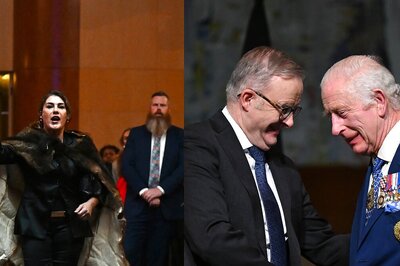
views
Kabul: The Taliban seems to have learnt its lessons fast in the use of media as a force multiplier in its attempt to capture the heart and soul of the Afghan population.
It has come a long way from the total revulsion to movies, radio, music, television, videos and photographs of any living creature, even animals, which were considered taboo during their five-year rule in Afghanistan from 1996 to 2001. Radio and TV were banned and anybody found viewing a video or listening to a radio was flogged.
Realising the power of the media in its psychological battle, the Taliban now keeps media organisations up to date on its activities and these are broadcast on different radio and television channels.
The Taliban not only produces and freely distributes high-quality audio and videocassettes and other material, but its ranks also watch videos of rousing speeches and Taliban "attacks" and "sacrifices" for the "holy cause".
Most of the VCDs circulated during the last few months have logos of three major studios - Omat (Nation) Productions, Manbaul-Jihad (Source of Jihad) and Abdullah Videos.
These fictitious units produce videos for the Taliban - and probably also for al-Qaeda - in Arabic, Urdu and Pashto languages that are aimed at potential sympathisers in southern Afghanistan and the adjoining Pakistan tribal belt and Arab extremists.
The videos show images of Taliban "warriors" killed in the "holy war" or of alleged spies "confessing" before their heads are chopped off. These are meant to play on the deep ethnic and religious pride of emotionally charged young minds to net them as recruits.
One kind preaches the religious rhetoric of the anti-foreigner Jehad that brought the Soviet army to its knees in Afghanistan in the 1980s and is now being used against the US-led coalition forces.
Another plays to Arab extremists, who despise the US and the West for their attitude towards the Islamic world, including Afghanistan, the Palestinians, Iran and Iraq.
The videos, secretly handed out person to person, often start with a religious cappella and verses from the Quran.
There are images of sophisticated US military planes and armoured vehicles juxtaposed with the Taliban's low-tech small arms and homemade bombs stuffed with nails, nuts and bolts.
New Taliban recruits are shown training in difficult terrain and under harsh conditions, while messages from al-Qaeda leaders Osama bin Laden and Ayman Al Zawahiri boom out promising success and, for "martyrs", paradise.
Every video includes interviews with purported Taliban commanders who claim to have shot down US helicopters or to have killed US or Afghan soldiers.
Some videos show gruesome documentary footage of what are termed "civilian casualties" of US bombings in Afghanistan, Iraq and Pakistan, or of Christians chopping off the heads and arms of Muslims in Indonesia's religiously tense Poso district.
Their targeted audience is a less-educated section of the population with little power of political analysis and which reacts emotionally. The images often work well to arouse passions, firing up a feeling for the militants' cause.
The government lacks an effective strategy "not to censor but to guide the news to the truth," admits Defence Ministry spokesman, General Mohammad Zahir Azimi.
"The psychological battle to win the mind is very important - sometimes it can even change the outcome of a war," Azimi added.
The Taliban fills that void by even claiming responsibility for attacks that they may have had no part in, with many analysts saying it is not certain if it was behind a recent series of minor bombings in the capital Kabul. The Taliban is often too happy to claim credit for anything.
Taliban videos, magazines and website (www.alemarah.org) aside, its spokesmen are happy to answer queries all the time while their counterparts in the government can be less accessible.
The Afghan interior ministry, meanwhile, has barred provincial authorities from talking to the media.
And, with Taliban statements sometimes grabbing headlines, the government last month issued "guidelines" to local news outlets that barred interviews with Taliban leaders and criticism of foreign troops - a move that attracted wide condemnation and backfired.




















Comments
0 comment